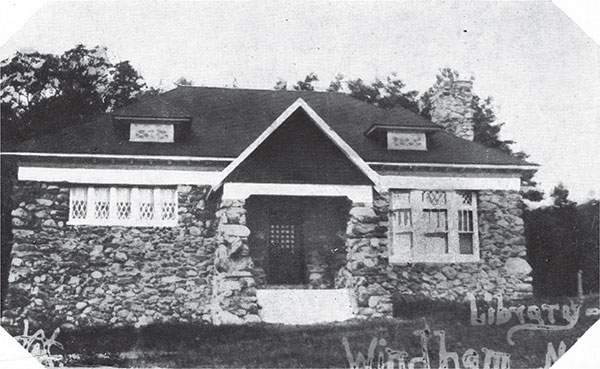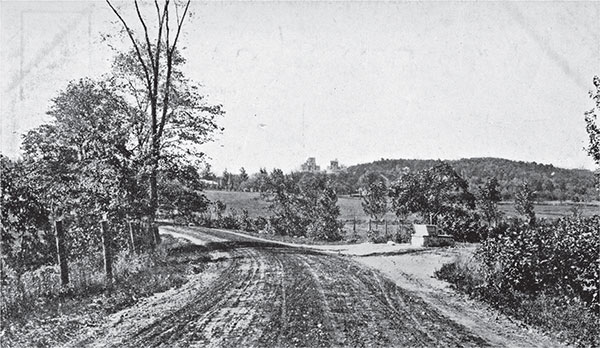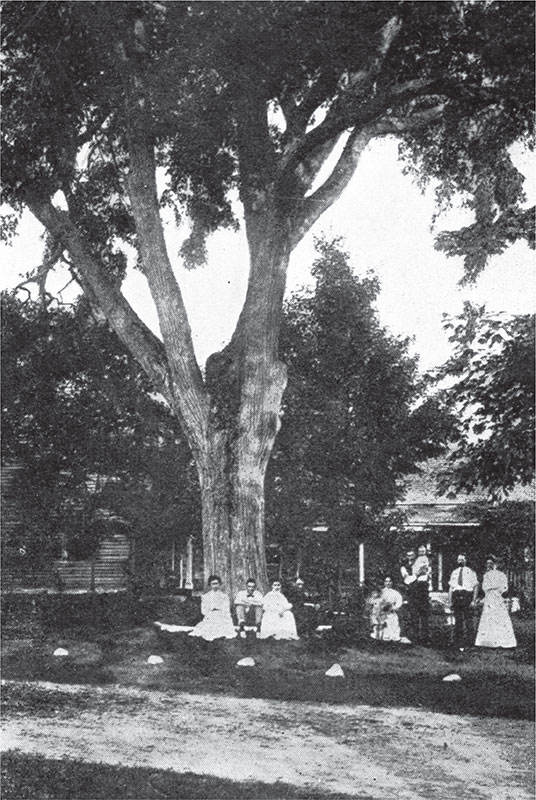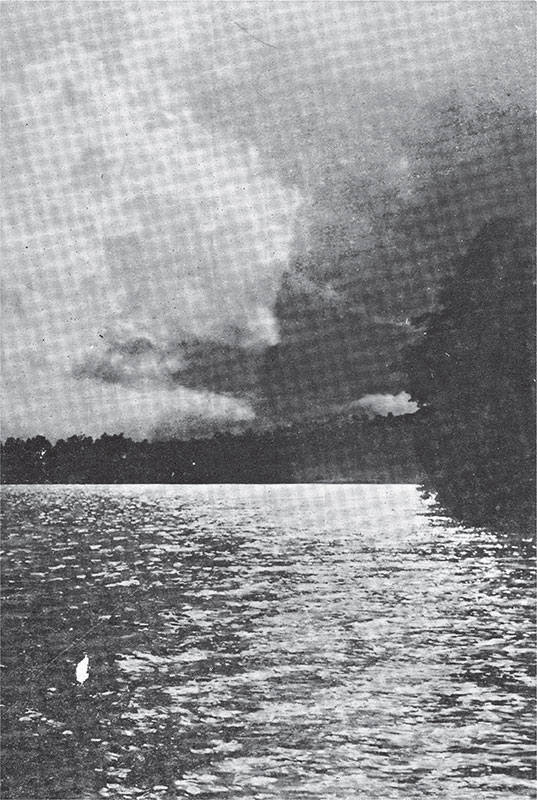
One of the many postcards produced by E.W. Armstrong in the first quarter of the twentieth century. Author’s collection .
18
GREETINGS FROM WINDHAM
Until the advent of social media and smartphones, postcards were the preferred way to send greetings to others. Postcards offered a convenient way for vacationers to show their friends and families what it was like where they were. Although private mailing cards were first introduced around 1898, it was not until several years later that illustrated, hand-colored views became commonplace. However, until 1907, senders were not allowed to write personal messages on the reverse of the postcards; the back was reserved solely for the address. If senders wanted to write about how they were doing or send some other sentiment, they would have been forced to write over the image on the front of the postcard. This problem was solved in 1907, when divided-back postcards were allowed by the postal service. These new postcards devoted half the space on the back for personal messages, with the other half being used for the address. Another major advance in postcard technology came about the same time as the divided-back cards. Real photo postcards allowed any image to be made into a postcard. Rather than send a mass-produced, impersonal postcard, you could send an image of yourself on vacation or a specific view of whatever scene caught their eye.
The postcard industry in Windham started when summer boarders wanted to show their friends and family where they were staying. What better way to do this than a hand-colored postcard view of the home they were staying in? For several cents, you could purchase such a postcard or a postcard showing another scene in town. The proprietors of the boardinghouse would often publish their own cards, usually through Frank W. Swallow, one of the largest postcard publishers in New Hampshire. The wives of George Johnson and George Jackson were among the operators of the town’s most popular boardinghouses to publish postcards. Not only was this a great way to supplement the income paid for room and board, but these postcards were also excellent advertising.

One of the many postcards produced by E.W. Armstrong in the first quarter of the twentieth century. Author’s collection .

A postcard published by the wife of George W. Johnson that depicts a quaint scene along a road in Windham. Author’s collection .

A postcard published by Mrs. M.L. Jackson that shows a group of summer boarders at Elm Farm. Author’s collection.
In the first quarter of the twentieth century, many vacationers would have been forced to rely on word of mouth in order to choose the best place to stay. Even with an occasional newspaper ad, there would have been no way for a prospective boarder to get some idea of what the building and surroundings looked like. Postcards offered the Jacksons, and other boardinghouse owners, a cheap, efficient way to show anyone anywhere in the nation what their home looked like. A particularly charming postcard of an antique home might have enticed the recipient to spend a few summer days in Windham at the home. Postcards also helped to show outsiders the landscape of Windham.
Not only were postcards available at the individual boardinghouses, but they were also available at general stores. Nathaniel Garland published many views of scenes from various areas of Windham. These were offered for sale in his store at Windham Centre. Whether out of pride, desire for advertising or a combination of both, Garland even published a view of his own store. George Seavey, who operated a mill at the Windham Junction, also published postcards. One of the most popular views he published was of Butterfield’s Boulder; the popular attraction certainly warranted the publishing of several different postcards with its image. As many tend to slightly exaggerate when sharing interesting anecdotes with others, it would have been helpful to have the postcard view of Butterfield’s Boulder to prove how massive it was; it is doubtful many would have believed it otherwise.
There were countless postcards produced depicting Cobbett’s Pond. As the biggest attraction in Windham, it would not be a stretch to say almost every angle of the pond has been captured by a postcard. Beginning just after the turn of the twentieth century, postcard publishers found the pond to be a popular view. The earliest postcards of the pond did not show much more than open land and forested shorelines, with a scarce summer cottage being visible every so often. Mrs. E.G. Rothera, whose family owned a farm near the shore of the pond, was one of the publishers of postcards depicting the pond. However, when public beaches began to open decades later, a new view of the pond became popular. Postcards began to show swimmers diving from a raft or relaxing at the beach. Such postcards could be brought home to be saved as memories of a summer day well spent or sent to show others how much fun could be had at the beach.

A circa 1910 postcard of an evening sunset on Cobbett’s Pond published by Mrs. E.G. Rothera. Author’s collection .
As vacation travel to Windham began to decline around the third quarter of the twentieth century, so did the production of Windham postcards. Advances in camera technology allowed anyone an affordable, convenient way to take and develop their own photographs, leaving little reason to purchase postcards. Postcard production, for all intents and purposes, ceased with the closing of the public beaches in the 1970s. Fortunately for future generations, the postcards produced of Windham for approximately seven decades have proven to be a valuable look at Windham’s past. The hundreds of unique postcards produced depicting scenes from every part of town represent much more than their original ephemeral purpose.